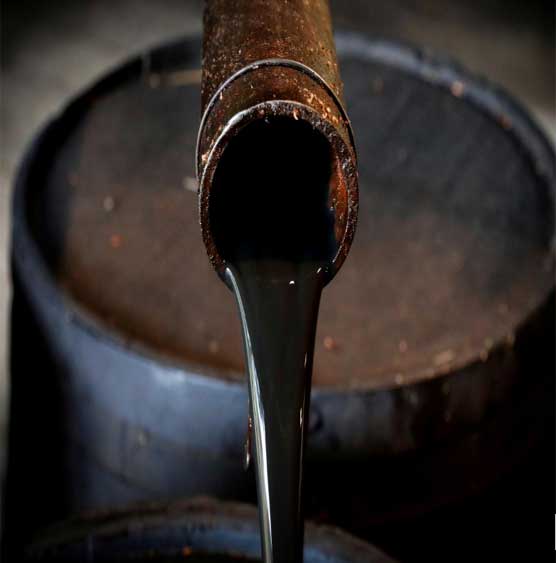Oil extends 7 percent slide as outlook darkens

U.S. West Texas Intermediate (WTI) crude oil futures were at $55.26 per barrel at 0600 GMT.
SINGAPORE (Reuters) - Oil markets fell again on Wednesday, extending losses from a 7 percent plunge the previous session as surging supply and the specter of faltering demand scared off investors.
U.S. West Texas Intermediate (WTI) crude oil futures were at $55.26 per barrel at 0600 GMT, down 43 cents, or 0.8 percent, from their last settlement.
International benchmark Brent crude oil futures LCOc1 were down 36 cents, or 0.6 percent, at $65.11 per barrel.
Crude oil has lost over a quarter of its value since early October in what has become one of the biggest declines since a price collapse in 2014.
Reuters’ technical commodity analyst Wang Tao said Brent and WTI would both likely fall further, with a likely Brent range of $62.18-$63.95 a barrel and an expected WTI range of $53.26-$54.13 per barrel.
The slump in spot prices has turned the entire forward curve for crude oil upside down.
Spot prices in September were significantly higher than those for later delivery, a structure known as backwardation that implies a tight market as it is unattractive to put oil into storage.
By mid-November, the curve had flipped into contango, when crude prices for immediate delivery are cheaper than those for later dispatch. That implies an oversupplied market as it makes it attractive to store oil for later sale.
Oil markets are being pressured from two sides: a surge in supply and increasing concerns about an economic slowdown.
U.S. crude oil output from its seven major shale basins is expected to hit a record 7.94 million barrels per day (bpd) in
December, the U.S. Department of Energy’s Energy Information Administration (EIA) said on Tuesday.
That surge in onshore output has helped overall U.S. crude production C-OUT-T-EIA hit a record 11.6 million bpd, making the United States the world’s biggest oil producer ahead of Russia and Saudi Arabia.
Most analysts expect U.S. output to climb above 12 million bpd within the first half of 2019.
“This will, in our view, cap any upside above $85 per barrel (for oil prices),” said Jon Andersson, head of commodities at Vontobel Asset Management.
The surge in U.S. production is contributing to rising stockpiles.
U.S. crude stocks climbed by 7.8 million barrels in the week ending Nov. 2 to 432 million as refineries cut output, data from industry group the American Petroleum Institute showed on Tuesday.
The producer cartel of the Organization of the Petroleum Exporting Countries (OPEC) has been watching the jump in supply and price slump with concern.
OPEC has been making increasingly frequent public statements that it would start withholding crude in 2019 to tighten supply and prop up prices.
“OPEC and Russia are under pressure to reduce current production levels, which is a decision that we expect to be taken at the next OPEC meeting on Dec. 6,” said Andersson.
That puts OPEC on a collision course with U.S. President Donald Trump, who publicly supports low oil prices and who has called on OPEC not to cut production.


